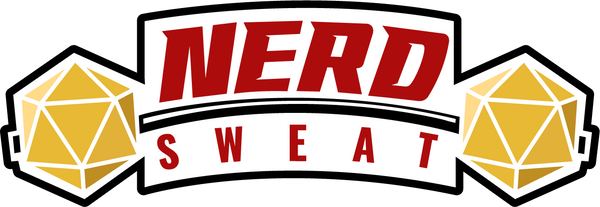
D&D for Storytellers: How the Game is a Narrative Playground
Are you the kind of person who loves getting lost in stories? If you're an avid reader, a movie buff, or someone who’s always dreamed of crafting your own epic tale, then Dungeons & Dragons (D&D) might be the perfect way to unleash your storytelling passion. D&D offers a unique experience where you’re not just an observer of a story but an active participant in creating one. Here’s why every storyteller should give D&D a try and how to get started!
1. You’re the Hero of Your Own Story
In D&D, you design a character from scratch: their personality, appearance, backstory, and motivations. Imagine if Frodo Baggins from The Lord of the Rings had an entire unique past you could shape—or if Harry Potter’s journey through Hogwarts was in your hands to decide! D&D allows players to create and embody their characters fully, bringing their own flavor to the adventure.
Example: Let’s say you want to play a rogue with a hidden past as a prince, disillusioned with royal life and eager to live a life of adventure. This character’s personal struggles, secrets, and growth can become pivotal parts of the storyline, affecting not only your character but the entire party.
2. World-Building Freedom
The Dungeon Master (DM) role is ideal for storytellers who love crafting immersive worlds. In this role, you can create a setting with unique cultures, creatures, and histories—kind of like writing a fantasy novel where your friends directly interact with the world you create.
Example: Imagine building a world inspired by Delicious in Dungeon, where the characters embark on a culinary adventure through a vast, dangerous dungeon. Instead of traditional food, they rely on cooking ingredients from the monsters they encounter. You can create layers of dungeon floors, each with its own ecosystem of bizarre and delicious creatures. Players could visit mushroom forests with towering fungi, dragon nests hiding rare “spices,” or underground rivers full of fish with unique powers. By adding cooking and foraging as part of the quest, you make survival a fun, creative challenge that adds flavor (literally!) to the adventure.
Resources: For tips on building fantasy ecosystems and culinary adventures, check out the Dungeon Master’s Guide for guidance on custom environments and monster design. You can also browse D&D Beyond for monster templates that can be creatively “tweaked” into edible ingredients for this unique world!
3. Collaborative Storytelling
In D&D, the plot develops based on the choices of all players. It’s storytelling with a twist: the unexpected can happen, leading to moments that are funny, heartfelt, or even dramatic. Unlike a book or a movie, D&D stories are interactive, evolving with each player’s decision.
Example: Say your party is exploring an ancient ruin rumored to be haunted. The DM may have written a simple dungeon crawl, but one player decides their character has a long-lost connection to the ruin’s ghostly inhabitants, transforming a simple adventure into a personal journey.
Reference: Critical Role is an example of how collaborative storytelling works in D&D. Their popular YouTube channel showcases professional voice actors playing through a story together, with many surprises that come from players making choices on the fly.
4. Endless Story Arcs and Plot Twists
D&D is the ultimate sandbox for storytellers who love plot twists and complex story arcs. You can build long-term mysteries, throw in unexpected revelations, or create relationships between characters. Over time, your story unfolds like a serialized novel, with each session adding new layers.
Example: Start with a simple quest to retrieve a magical artifact, only for players to discover it’s a key to an ancient dragon’s prison. This twist can lead to a long story arc where players either protect the artifact or risk unleashing a greater evil, developing suspense and anticipation over several sessions.
Resources: For ideas on plot twists and story arcs, check out Kobold Press's supplements for DMs, which include plots, characters, and world-building tools that can add depth to your campaign.
Getting Started: Resources for New Storytellers
Ready to dive into D&D storytelling? Here are a few resources to kickstart your journey:
- D&D Beyond: Free character sheets, tools, and rulebooks (dndbeyond.com)
- The Dungeon Master’s Guide: Essential for those looking to create intricate worlds and campaigns.
- YouTube Channels: Critical Role and High Rollers are great for storytelling inspiration and real-play examples.
Whether you’re playing a hero or crafting a universe, D&D transforms your storytelling passion into an interactive experience shared with friends. It’s not just a game—it’s a narrative playground where imagination is the only limit. So gather your friends, roll the dice, and let the story unfold!

1 comment